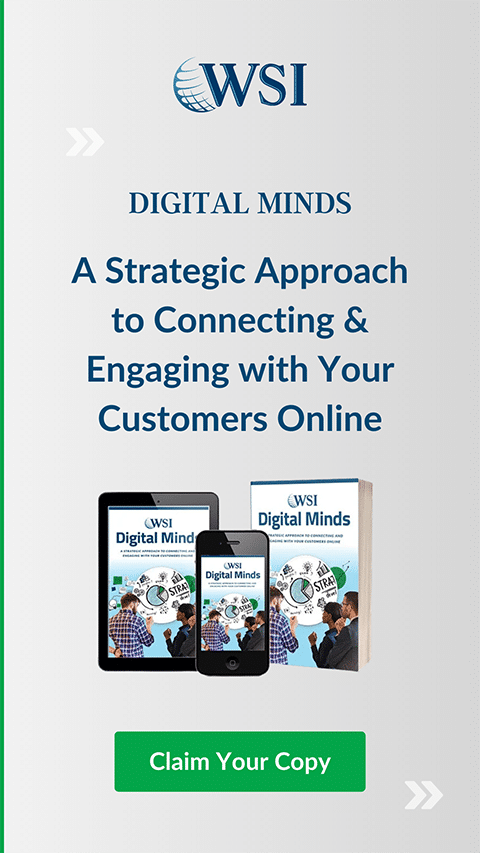
Summary: Each new year brings new trends for digital marketing and web design. Learn about what is happening in 2022 and how you can adapt to these changes.
2022 is just getting started, and so are your digital marketing activities for this year. If you are thinking about refreshing your website as part of those activities, you may be thinking about where your focus should be: which site improvements would be the best use of your resources?
While every business is different, web design trends typically offer valuable clues into which site aesthetics and features resonate most with today’s audiences. Read on to learn more about some of the leading web design trends expected to dominate 2022 and how you can implement these trends on your website.
Top Web Design Trends for 2022
Core Web Vitals
Google’s Core Web Vitals are a new set of key metrics their search algorithm uses to determine where websites will rank within a search query. The three metrics in the set include:
- LCP – Largest Contentful Paint (how quickly ‘above the fold’ content loads)
- FID – First Input Delay (how quickly the site responds to the user’s first input)
- CLS – Cumulative Layout Shift (how much the website’s layout shifts in response to content that is still loading)
All are related to website performance in different ways, but general performance tune-ups may not address all three of these issues. For best results, use Google’s built-in tools to see exactly how well your website is performing on each count, then follow their recommendations to improve your scores as needed.
User Experience (UX)
User experience (or UX) refers to how easily someone can use your business’s website to perform their intended actions. A website with good UX is clean, easy to navigate, and makes it as simple as possible for users to filter and digest information. Things like sorting options on e-commerce interfaces and a dark mode for browsing improve the ease of use further.
Some users may also enjoy personalized content, such as product recommendations generated based on what they have browsed previously. Be sure to read up on data privacy requirements and give users a clear link to your privacy policy if you plan to implement this UX feature.
Page Load Speed
Load speeds are a major component of the user experience. Slow loading speeds are linked to high bounce rates, low conversions, poor traffic, and many other negative consequences. Loading speed also factors directly into your website’s SEO. While it is related to Core Web Vitals, general page speed is critical in its own right.
To improve your page load speeds, you can:
- Compress images and video files to reduce the amount of bandwidth needed to load each page
- Condense your webpages’ code to remove clutter on the backend
- Use a content distribution network to get access to better infrastructure for file hosting purposes
Remember that loading speed optimization is not a one-and-done task. To maintain fast load speeds, every new page or update, you add to your site must be evaluated and optimized as well.
Accessibility
Accessibility is the practice of accounting for the needs of different users, including those using unconventional devices or living with disabilities. Ontario businesses with more than 50 employees are currently required to have a website that complies with Accessibility for Ontarians with Disabilities Act (AODA). Some of the tools businesses can use to make their website more accessible include text alternatives, audio controls, captions, and contrast options.
Accessibility can be a tricky topic to tackle, so it may be worth your while to get some professional assistance to bring your site up to code. We can help you determine where your current website falls short of AODA standards and make the necessary improvements to ensure compliance. Reach out ot us to request a complimentary AODA audit.
Illustrations
In 2022, it is time to start thinking beyond the photograph. Websites need some sort of visuals to stay interesting to users, but photos are a dime a dozen and few of them stand out enough to make any lasting impact.
Using illustrations on your website instead is the perfect way to overcome this problem. Illustrations provide a unique look and give you complete control over the image, allowing you to shape it according to your brand’s established look and feel.
GIFs as Graphics
Graphics are an indispensable part of any website, but GIFs add even more visual pizzazz. The image’s movement adds an extra dimension to its appeal and keeps users engaged as they browse the page.
Many online tools are available to create GIFs based on short video clips or some strung-together static images. Think about what parts of your site would benefit from additional visual interest and what ideas you could use to underscore your company’s products or brand. Pairing the right image with the correct placement will create a high-impact visual that users will remember.
Animations
Similar to GIFs, animations can be used to give websites some extra visual polish. Movement naturally draws the eye, so a short looping animation can make sure the user takes notice of key page elements like your headline, slogan, or call to action.
If you decide to add animations to your website this year, take care not to overdo it. Too many moving parts can quickly overwhelm both your users’ eyes and your website’s bandwidth. Use animations to accent key areas like your home page and keep users focused on what really matters.
Voice Optimization
More and more people are using tools like speech-to-text technology and digital assistants to conduct searches these days. While this may seem like a simple switch in tools, it also has significant implications for the search phrases people use.
To capitalize on this trend, you will need to incorporate more natural language processing into your SEO keywords. Phrases like ‘Mexican restaurant near me’ or ‘hair salon in Scarborough’ situate your business in space and improve your website’s visibility in searches within that geographic area.
Mobile Responsiveness
The introduction of mobile-first indexing on Google has made mobile responsiveness more important than ever in 2022. Not only does accommodating mobile users improve the user experience for a significant chunk of your leads, but it also preserves your site’s ability to claim the high search ranks that are so important for visibility.
Building your website using responsive design principles gives it the ability to adapt its layout to suit any device, including mobile phones of all sizes. Web designers often prioritize responsive design to ensure that sites are future-proof and will not need constant updates as device sizes shift over time.
Artificial Intelligence
Artificial intelligence has come a long way in the last few years. Now, companies can easily set up basic AI tools like customized chatbots to help leads access the customer service they need at any time.
Your business could benefit from implementing AI chatbot technology too. Examine your user data to determine what types of questions leads are most likely to ask, then add those questions and the appropriate responses to your chatbot algorithms. If you are not sure how to do this, you can always consult us for help.

Our Web Design Process
If you are considering implementing any of these trends on your website, you may also be thinking about hiring a web design company to get the job done.
Each web design company has its own process for developing new websites for their clients. At WSI Comandix, we follow the six steps listed below:
- Step 1: Discovery. We schedule a consultation with you to determine the scope of your project, discussing everything from your target market and business goals to your brand aesthetic.
- Step 2: IBA™. We examine your current website and marketing strategies to identify your current strategy’s weak points and find opportunities to strengthen them with specific targeted actions. Our Internet Business Analysis service includes a full plan for your web design project, complete with details like site mapping and wireframing.
- Step 3: Build. We execute your design plan to create a working prototype version of your website, complete with written copy, multimedia content, and any additional features you request. If you are not satisfied with any part of the finished design, we discuss your concerns and perform revisions to ensure that the final product meets your expectations.
- Step 4: Implement. We give your website a thorough battery of tests to ensure it performs well for desktop and mobile users. Once these benchmarks are met, we launch your site to the public.
- Step 5: Measure. We collect data to observe how your website is performing, including how much traffic it is receiving, where that traffic is coming from, what users are doing on your website, and how many successful conversions it is generating.
- Step 6: Manage Results. Using the data we collected, we create in-depth reports that keep you informed on how well your site is performing and determine if any changes are needed to achieve optimal results.
Make Your Mark on Digital Marketing in 2022
Still not sure where to start with your digital marketing this new year? Hire WSI Comandix to help you with your web design and other digital marketing activities. Our expertise and personal touch will help you make the most of 2022’s opportunities. Contact us today to discuss your digital marketing needs and start working toward a better website for your business goals.
Don't stop the learning now!
Here are some other blog posts you may be interested in.
VIEW ALL BLOG POSTS-
Why You Should Work with a Web Design Company for Your Project
The importance of having a strong online presence cannot be overstated in the current digital age. For …
READ MORE -
How Effective Web Site Development Can Boost Your Online Presence
With more and more businesses, both small and large, embracing the use of digital marketing and online channels …
READ MORE -
2020’s Best Web Design Elements
How Ensuring Your Web Design Is Impressive Can Help Your Business If you are looking to redesign your website, you should consider hiring …
READ MORE









